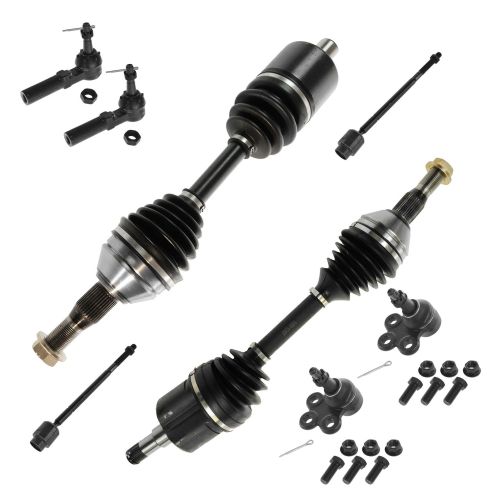1ASFK03259-Chevrolet Buick Pontiac Olds Front 8 Piece Steering & Suspension Kit TRQ PSA59210























Replaces
2007 Chevrolet Impala LS V6 3.5L with RPO Code FE1 (Soft Ride Suspension) Front 8 Piece Steering & Suspension Kit TRQ PSA59210








You may also like

4 Piece Steering & Suspension Kit
$261.95

10 Piece Steering & Suspension Kit
$269.95

14 Piece Steering & Suspension Kit
$273.95

8 Piece Steering, Suspension, & Drivetrain Kit
$275.95

6 Piece Steering & Drivetrain Kit
$277.95

10 Piece Steering, Suspension, & Drivetrain Kit
$305.95

16 Piece Steering, Suspension, & Drivetrain Kit
$364.95

16 Piece Steering, Suspension, & Drivetrain Kit
$477.95
Product Reviews
Loading reviews
5.00/ 5.0
4
4 reviews
Great products, low prices, fast shipping
December 1, 2018
Thank you so much for surpassing all of my expectations! I was able to get everything I needed so much cheaper than the big stores and the free shipping that arrived incredibly fast was a huge bonus! I will definitely be ordering from you again!
Great delivery and received items
June 28, 2020
My parts came on time and they are in great shape, looking forward to shopping again soon.
April 15, 2022
Awsome, all parts work good price also
Good deal good quality
November 3, 2023
Good Quality Parts for a good price, I would always go through 1A auto for these suspension part packages.
Customer Q&A
Will this fit for my 2006 chevy impala 3.9 LTZ V6?
August 29, 2017
10
Yes, this will fit your 2006 Chevy Impala as long as you do not have RPO code FE4, and does not fit SS models.
September 3, 2017
Tim K
Do you have a kit like this for 2013 buick lacrosse touring with performance suspension?
May 28, 2023
Chevrolet is a registered trademark of General Motors Company. 1A Auto is not affiliated with or sponsored by Chevrolet or General Motors Company.
See all trademarks.










